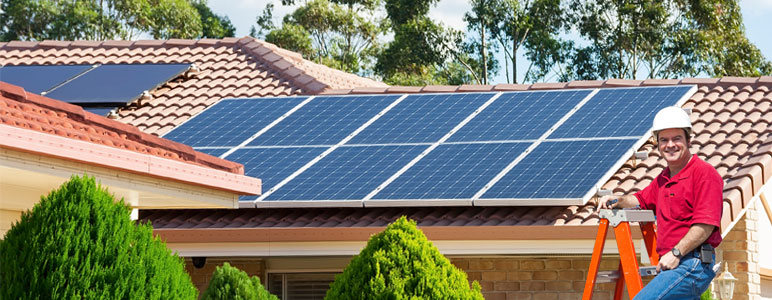


We live in very exciting times! As new solar energy technologies and policies develop, they are making solar cost‑competitive with fossil fuels. Local governments in communities and counties across the U.S. can play an important role in helping enable more residents and businesses transition to solar energy sources. It’s a win-win for consumers, the environment and the economy.
This is the first in a series of articles about the role of local governments in accelerating the transition to clean renewable energy. Here, I highlight two important tools as examples from California that can help government agencies nationwide in supporting the solar industry: codes and permitting and clean-energy financing.
Codes & permitting of rooftop solar
Now more than ever, the solar industry is providing consumers with more distributed solar energy system choices. Local governments need information at their fingertips to help consumers and businesses produce, consume and manage these systems. In December 2014, CSE and the Governor’s Office of Planning and Research released the California Solar Permitting Guidebook.
This user-friendly Guidebook provides local governments and their permitting agencies the resources to develop expedited permit review and approval processes for installing solar photovoltaic (PV) and solar water heating (solar thermal) on a variety of platforms from commercial and residential buildings to parking lots and other structures. It outlines the status of current laws, regulations and codes; describes the ideal permit review and project inspection processes and makes recommendations for how to streamline related government procedures. It provides a toolkit of seven customizable templates that allow local jurisdictions to create uniform and streamlined permitting for small-scale solar.
We’ve designed the Guidebook to serve as a resource for local governments outside of California as well, so that they can use the lessons learned to help their constituents make the right clean-energy decisions.
Clean-energy financing options
Financing options are crucial to enable all communities access to clean energy solutions, whether it is energy and water efficiency or renewable energy such as rooftop solar. One of the most significant resources is Property Assessed Clean Energy (PACE) financing. PACE provides 100% financing with no down payment. It works by adding an assessment to the property owner’s tax bill that can be repaid up to 20 years. Any type of property – residential, commercial, multifamily, agricultural and nonprofit – is eligible.
While PACE programs now exist in 24 states and the District of Columbia, there is still much local governments can do to create programs where they don’t exist and to support and promote PACE where it is available.
Education, training and resources
CSE plays a vital role in training local government staff and educating decision-makers about resources such as the Guidebook and programs like PACE. We recently hosted a webinar, Implementing PACE Programs for Local Governments, that spoke to local government officials and other stakeholders about PACE and how it pertains to their jurisdiction.
Our goal is to bring all parties to the table: solar installation contractors, the real estate industry and others in building trades, financial institutions and utilities as well as local governments and their constituents at every income level. This creates a wealth of diverse perspectives and an equitable framework to help meet everyone’s needs and get on the path to 100% renewable energy.
In my next article, I’ll discuss the explosive job growth in the solar industry. Future topics will include community choice aggregation and building science and electric vehicle integration. Come back to learn more about our clean energy future.

